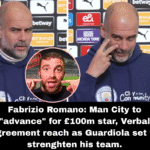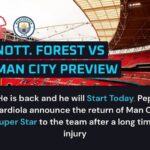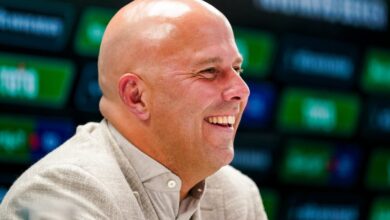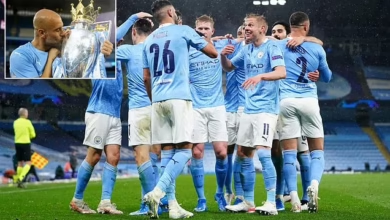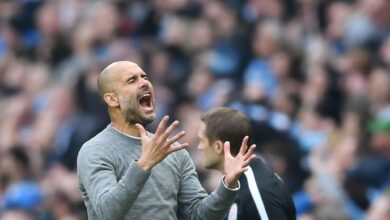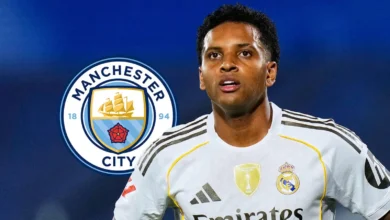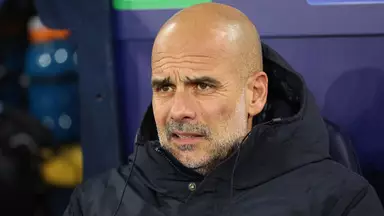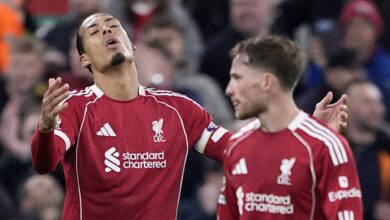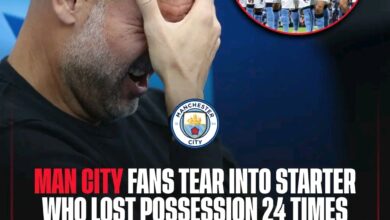Manchester City’s Potential January Move for Morgan Gibbs-White: A Comprehensive Analysis
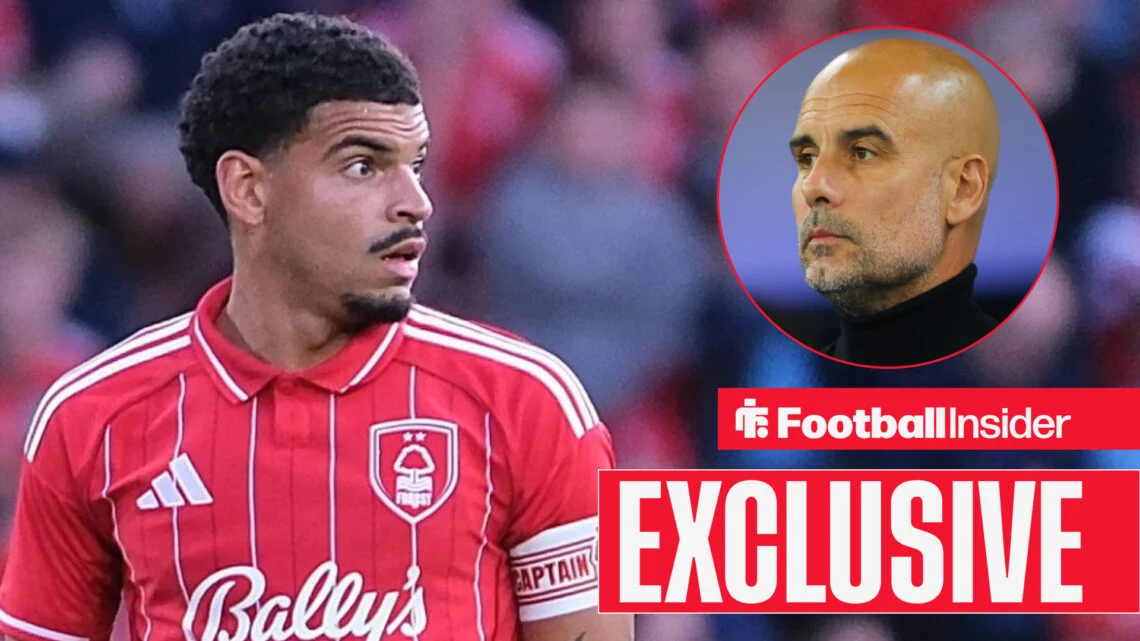
The world of football transfers never sleeps, and as we move deeper into the 2025 season, speculation continues to swirl around one of England’s most promising talents. Morgan Gibbs-White, the versatile midfielder who has become the creative heartbeat of Nottingham Forest, finds himself once again at the center of transfer rumors linking him with a move to Manchester City. This potential January transfer represents more than just another big-money move—it could reshape the tactical landscape for both clubs and significantly impact the Premier League title race.
To understand the current situation, we must first examine the dramatic events of the summer transfer window. Manchester City’s initial interest in Gibbs-White was part of Pep Guardiola’s broader strategy to add creativity and versatility to his midfield options. The Spanish manager has long valued players who can operate in multiple positions and adapt to his complex tactical systems, making the former Wolves academy product an attractive proposition.
However, City’s summer plans took a different direction when they successfully secured the signings of Rayan Cherki from Lyon and Tijjani Reijnders from AC Milan. Both players were brought in specifically to occupy that crucial number 10 position behind Erling Haaland, addressing what many saw as a key weakness in City’s attacking structure. Cherki, with his technical brilliance and eye for goal, offered the kind of unpredictable creativity that Guardiola craves, while Reijnders brought Serie A experience and tactical intelligence that promised to slot seamlessly into City’s possession-based system.
With these acquisitions complete, it appeared that Gibbs-White’s path to the Etihad had been blocked. Enter Tottenham Hotspur, who saw an opportunity to strengthen their own squad with one of the Premier League’s most exciting young talents. The North London club moved decisively, triggering what they believed to be Gibbs-White’s £60 million release clause—a figure that reflected both his immense potential and the inflated nature of the modern transfer market.
What followed was one of the most controversial transfer sagas of the summer. Nottingham Forest immediately contested Tottenham’s approach, claiming that Spurs had gained knowledge of the release clause through illegal means. This allegation sent shockwaves through the football community and raised serious questions about the ethics of modern transfer negotiations.
The specifics of Forest’s complaint remained largely confidential, but industry insiders suggested it involved potential breaches of confidentiality agreements or unauthorized access to sensitive contract information. Such allegations, if proven, could have resulted in serious sanctions for Tottenham, including potential transfer bans or heavy fines from both the Premier League and FIFA.
The controversy created a standoff that ultimately worked in Forest’s favor. Rather than risk a prolonged legal battle that could damage their reputation and potentially derail their transfer plans, Tottenham eventually withdrew from negotiations. This gave Forest the breathing room they needed to convince their star player to remain at the City Ground.
In response to the chaos surrounding his future, Gibbs-White made the decision that surprised many in the football world—he signed a contract extension with Nottingham Forest. This wasn’t merely a short-term deal to buy time; it was a significant commitment that demonstrated his belief in the project being built at the City Ground under manager Steve Cooper and later under Nuno Espírito Santo.
The contract extension represented more than just financial security for the player. It was a statement of intent from both parties. For Forest, it showed their ambition to retain their best talents and build a squad capable of establishing themselves in the Premier League’s upper echelons. For Gibbs-White, it demonstrated loyalty to the club that had given him the platform to showcase his talents on the biggest stage.
However, contract extensions in modern football often serve multiple purposes. While they provide security and show commitment, they also typically increase a player’s market value and give the selling club more leverage in future negotiations. With his new deal, Gibbs-White’s transfer value likely increased beyond the original £60 million figure, making any future move even more lucrative for Forest.
Despite his summer commitment to Forest, speculation about Gibbs-White’s future has not subsided. Former England and Southampton striker Matt Le Tissier’s comments to Football Insider have reignited discussion about a potential January move to Manchester City. Le Tissier’s analysis is particularly insightful given his experience as a creative midfielder who operated in an era when such players were expected to be the primary source of goals and assists from midfield.
Le Tissier’s assessment that Gibbs-White would “adapt to Pep’s ways” is based on his observation of the player’s tactical discipline and versatility. In modern football, especially under Guardiola’s tutelage, creative players must be willing to sacrifice individual freedom for collective success. They must press intensively when out of possession, maintain positional discipline to preserve the team’s structure, and be comfortable receiving the ball in tight spaces under pressure.
Gibbs-White has demonstrated these qualities throughout his time at Forest. His work rate off the ball has improved significantly since his early days at Wolverhampton Wanderers, and his decision-making in possession has become more refined. These are precisely the attributes that Guardiola values in his attacking midfielders, as evidenced by the success of players like Kevin De Bruyne, David Silva, and more recently, Phil Foden in similar roles.
The question of how Gibbs-White would fit into Manchester City’s tactical system is complex but intriguing. Guardiola’s teams typically operate with a fluid front line that requires players to interchange positions seamlessly. The number 10 role in City’s system is not a fixed position but rather a starting point from which players drift wide, drop deep, or push forward depending on the phase of play.
Gibbs-White’s versatility would be invaluable in such a system. Throughout his career, he has operated as a traditional number 10, a left winger, a right winger, and even as a deeper-lying playmaker. This positional flexibility is exactly what Guardiola seeks in his attacking players, as it allows him to create overloads in different areas of the pitch and exploit opponent weaknesses.
Moreover, Gibbs-White’s technical ability with the ball would complement City’s possession-based approach. His first touch, close control, and ability to play in tight spaces are well-suited to the intricate passing patterns that characterize Guardiola’s teams. His vision and range of passing, while perhaps not yet at the level of a De Bruyne or Silva, show potential for development under the right coaching.
Any potential January move for Gibbs-White would require significant financial commitment from Manchester City. The player’s new contract at Forest likely includes substantial wage increases and potentially higher release clauses or buy-out fees. Transfer fees for proven Premier League players in their early twenties typically start at £50 million and can easily exceed £80 million for the most sought-after talents.
For City, this wouldn’t necessarily be prohibitive. Despite ongoing Financial Fair Play scrutiny, the club has consistently shown its willingness to invest heavily in players who fit their tactical requirements. The acquisition of players like Jack Grealish for £100 million demonstrates that City will pay premium prices for English talent that can contribute immediately.
However, the January transfer window presents unique challenges. Selling clubs are typically more reluctant to part with key players mid-season, knowing that replacements may be difficult to secure. This often results in inflated prices as buying clubs must pay a premium to compensate for the disruption to the seller’s season.
Forest would likely demand significantly more than the £60 million that Tottenham attempted to pay in the summer. A January fee could easily reach £80-100 million, especially if Forest is performing well in the Premier League and fighting for European qualification.
Le Tissier’s comment about needing to “look at what the league table looks like come January” highlights a crucial aspect of any potential transfer. Manchester City’s interest would likely depend on their position in various competitions and their assessment of what’s needed to achieve their objectives.
If City finds themselves trailing in the Premier League title race, they might view Gibbs-White as the creative spark needed to reignite their campaign. His energy, directness, and goal threat from midfield could provide a different dynamic to their attacking play, particularly in games where opponents employ low blocks and compact defensive structures.
Conversely, if City is comfortably leading the Premier League and progressing well in the Champions League, they might decide that squad disruption isn’t worth the risk. Integrating a new player mid-season, regardless of their talent, always carries the risk of disturbing team chemistry and tactical balance.
The potential departure of Rodri adds another layer of complexity to City’s transfer planning. The Spanish midfielder’s injury problems and high wages have reportedly made him a candidate for sale, despite his Ballon d’Or triumph in 2024. Rodri’s potential exit would create a significant void in City’s midfield, both tactically and in terms of leadership.
While Gibbs-White operates in a more advanced role than Rodri, his arrival could facilitate a tactical reshuffle that addresses multiple needs simultaneously. City might deploy a more attack-minded midfield three, with Gibbs-White providing creativity from a slightly deeper position than he typically occupies at Forest.
The financial implications of selling Rodri could also help fund Gibbs-White’s acquisition. Despite his injury concerns, Rodri would likely command a substantial transfer fee from interested clubs, particularly those in Saudi Arabia or MLS who might be willing to overlook his recent fitness issues.
Any January departure would represent a massive blow to Nottingham Forest’s ambitions for the remainder of the season. Gibbs-White has been instrumental in Forest’s Premier League survival and their attempts to establish themselves as a mid-table team with European aspirations.
His creativity, set-piece delivery, and goal threat from midfield make him almost irreplaceable in Forest’s current setup. The club would likely demand assurances about immediate replacement signings before considering any offers, regardless of the financial incentives.
Forest’s American ownership group has shown ambition since taking control of the club, but they would face a difficult balancing act between maximizing the value of their key assets and maintaining competitive performance on the pitch. Selling Gibbs-White in January could provide funds for multiple new signings, but finding players who can immediately adapt to the Premier League’s demands is notoriously difficult.
From Gibbs-White’s viewpoint, a move to Manchester City would represent the pinnacle of his career ambitions. The opportunity to work with Guardiola, compete for major trophies, and test himself in the Champions League would be almost impossible to resist for any ambitious player.
However, his recent contract extension at Forest suggests a player who values stability and isn’t solely motivated by immediate career advancement. He has become the focal point of Forest’s team and enjoys the responsibility that comes with being their primary creative outlet. At City, he would initially compete with established stars for playing time and might need to accept a more rotational role.
The development aspect cannot be overlooked either. Working with Guardiola has transformed the careers of numerous midfielders, helping them reach levels they might not have achieved elsewhere. The Spanish coach’s attention to tactical detail and positional play could help Gibbs-White refine his game and potentially earn more regular England selection.
Gibbs-White’s England career has been somewhat stop-start, with competition for places in the attacking midfield positions particularly fierce. A move to Manchester City could enhance his international prospects, as Gareth Southgate and subsequent England managers have often shown preference for players competing at the highest level of club football.
Regular participation in Champions League matches and consistent challenge for major trophies would strengthen his case for England selection, particularly with the 2026 World Cup approaching. The experience of playing alongside world-class talents and adapting to Guardiola’s tactical demands could accelerate his development as a complete midfielder.
The potential Gibbs-White transfer must also be viewed within the broader context of the January 2025 transfer market. Several high-profile midfielders are expected to be available, and City will need to weigh their options carefully.
The market for creative midfielders has become increasingly competitive, with clubs recognizing the value of players who can operate in multiple positions and contribute to both offensive and defensive phases of play. Gibbs-White’s age profile, Premier League experience, and proven ability make him an attractive option, but City will undoubtedly explore alternatives before committing to such a significant investment.
The potential January transfer of Morgan Gibbs-White to Manchester City represents more than just another high-profile player swap. It embodies the current dynamics of Premier League football, where established clubs constantly seek to strengthen their squads while emerging teams fight to retain their best talents.
For Gibbs-White, the decision will likely come down to ambition versus stability. The security and importance he enjoys at Forest must be weighed against the opportunity to compete for the sport’s biggest prizes under one of its greatest coaches.
For Manchester City, Gibbs-White represents a calculated risk—a young, versatile talent who could provide the creative spark needed for another title push, but who would require significant investment and careful integration into an already successful system.
For Nottingham Forest, losing their star player would be devastating but could also provide the financial resources needed to build a more balanced and sustainable squad.
Whatever unfolds in January, the speculation surrounding Gibbs-White highlights the continued evolution of the transfer market and the premium placed on versatile, technically gifted players who can adapt to modern football’s tactical demands. As Le Tissier suggested, much will depend on the state of various league tables come January, but one thing is certain—this story will continue to captivate football fans until it reaches its conclusion.
The January window may still be months away, but the groundwork for one of its most significant stories is already being laid. Whether Gibbs-White ends up in Manchester City blue or remains in Forest red, his journey embodies the dreams and dilemmas that make football’s transfer market so endlessly fascinating.
